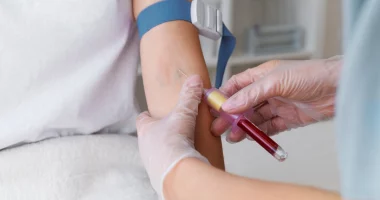Body dysmorphic disorder is a mental health issue where a person becomes extremely worried about a flaw in their appearance. This flaw might be so small that other people don’t notice it, but for a person with BDD, it causes a lot of anxiety and stress.
People with BDD can be concerned about any area of their body, however, they often focus on their hair and face. For example, someone might worry that their smile is crooked, their lips are uneven, or they have some other small feature that they think looks wrong. Some people believe that their facial hair or acne stands out much more than it actually does. Others might feel that their entire appearance is unattractive.
BDD makes these perceived flaws feel very real and significant to the person, even though others may see nothing wrong. This constant worry can make everyday life difficult for someone with BDD.
Causes of Body Dysmorphic Disorder (BDD)
Doctors are not entirely sure what leads to BDD, but there are several possible reasons why it might occur.
Genetic Factors: Some research suggests that BDD may be inherited. A small study indicated that 8 out of 100 people with BDD have a near family member who has also experienced the condition. This points to the possibility that specific genetic factors could play a role in its development.
Obsessive-Compulsive Disorder: BDD affects individuals who have been diagnosed with OCD or who have a family member with OCD. Studies show that between 8 to 37 out of 100 people with obsessive-compulsive disorder also have BDD. This overlap suggests that similar genetic factors might underlie both conditions. Additionally, BDD responds to treatments similar to those used for OCD, further supporting this connection.
Brain Function and Visual Processing: A 2004 study found that people with BDD tend to overfocus on details and perceive distortions when drawing figures and viewing features. While it’s unclear whether these differences in visual processing are a cause or a result of BDD, they may play a role in the disorder.
Serotonin Levels: Scientists have observed low levels of the neurotransmitter serotonin in some people with BDD. Although the exact role of serotonin in BDD is not well understood, treatments that increase serotonin levels seem to alleviate some symptoms, suggesting a complex relationship.
Childhood Experiences: Past experiences of teasing or body shaming can contribute to the development of BDD, as noted in one study. A heightened awareness of societal beauty standards might also change BDD, but whether this is a cause or a result of the disorder is still debated. Additionally, teachings that emphasize specific ideas of beauty might contribute to BDD, though more research is needed to confirm this.
Symptoms of Body Dysmorphic Disorder (BDD)
The primary symptom of BDD is an overwhelming preoccupation alongside a perceived flaw in the presence of an intense reaction to a minor physical imperfection. These signs are long-lasting and can vary in intensity over time, with the individual’s focus often shifting from one body area to another.
People alongside BDD commonly fixate on areas such as:
- Skin: Concerns about greasiness, acne, or wrinkles.
- Face: Worries about facial hair.
Specific areas of concern may also include:
- Mouth
- Nose
- Genitals
- Hair (including fears of hair loss)
- Breasts
- Teeth
This preoccupation can lead to several behaviors:
- Intense self-consciousness about physical presence.
- Repeatedly touching, measuring, picking, or staring at the perceived defect.
- Excessive research on the flaw.
- Neglecting social life, work, family, personal health, and well-being due to the obsession with the defect.
- Often checking the characters in mirrors, or reflective surfaces, or avoiding mirrors altogether by eliminating them from the home.
- Efforts to hide the defect using wigs, clothing, or makeup.
- Repeated visits to cosmetic surgeons or dermatologists in an attempt to fix the fault.
- Squandering hours each day thinking about the mistake, making it difficult to focus on other things.
- Seeking reassurance from others and experiencing frustration when others don’t see the fault.
- Frequent taking of “selfies” to seek approval.
It’s important to note that simply telling a person with BDD that there is no defect or that it is insignificant typically does not help, as they are unlikely to believe it.
Diagnosis
Many individuals with BDD never receive appropriate treatment because few seek assistance from a psychiatrist or doctor. Instead, they often turn to orthodontists, dermatologists, cosmetic surgeons, or other specialists to make physical changes to their appearance.
Role of Cosmetic Surgeons in Diagnosis
A 2015 study notes that, according to the DSM-5, 7-8 out of 100 people seeking plastic surgery in the United States are affected with BDD, but the actual number may be much higher. The authors urge plastic and cosmetic surgeons to recognize the symptoms of BDD and encourage patients to consult a psychiatrist or doctor rather than proceeding with surgery immediately. Using a BDD questionnaire can help identify individuals seeking unnecessary physical modifications. Surgery is not likely to reduce BDD symptoms and may worsen the patient’s condition or lead to dissatisfaction with the results. Cosmetologists might also refer a person for counseling if they meet the DSM basis for BDD, have had repeated surgeries without satisfaction, or exhibit excessive concern over a minor defect.
Treatment
Cognitive Behavioral Therapy (CBT)
CBT is a treatment option that helps individuals understand the reasons behind their thought patterns and how these thoughts affect their behavior. Through CBT, a person can learn to stop negative, automatic thoughts and begin to evaluate themselves more positively and realistically. This therapy also teaches healthier ways to manage urges or rituals, like mirror checking. Virtual CBT courses are available, providing a more affordable option compared to face-to-face counseling.
Medication
Selective serotonin reuptake inhibitors, a type of antidepressant medicine, have been shown to help relieve BDD symptoms in always half of the people who use them. Common SSRIs include fluoxetine, fluvoxamine, and citalopram.
Repetitive Transcranial Magnetic Stimulation (rTMS)
A 2018 study highlights rTMS as a promising new technique for treating BDD. This method involves stimulating specific parts of the brain utilizing electromagnetic fields. Researchers are exploring the use of rTMS to treat various conditions, including depression, anxiety disorders, and psychosis.
Outlook
Body Dysmorphic Disorder is a certainly serious mental health condition where a person becomes extremely concerned with their appearance and imagined or minor physical faults. A correct appropriate treatment can resolve the basic issues causing BDD, relieve symptoms, and help the person develop a healthier self-image. Effective treatment can also stop the person from seeking unnecessary and potentially risky surgeries.
A combination of counseling and medication is often successful in managing BDD. However, the first crucial step is recognizing what BDD is and understanding the importance of seeking medication.
Summary
Body Dysmorphic Disorder is a mental health condition characterized by obsessive concern over perceived flaws in appearance, often leading to severe distress. Symptoms include preoccupation with specific body parts, compulsive behaviors, and avoidance of mirrors.
Diagnosis is often challenging due to reluctance to seek psychiatric help, with cosmetic interventions sometimes sought instead. Treatment options include Cognitive Behavioral Therapy (CBT), medication like SSRIs, and emerging techniques like rTMS. Early intervention and accurate diagnosis are crucial in managing BDD, aiming to alleviate symptoms, prevent unnecessary surgeries, and promote a healthier self-perception.









